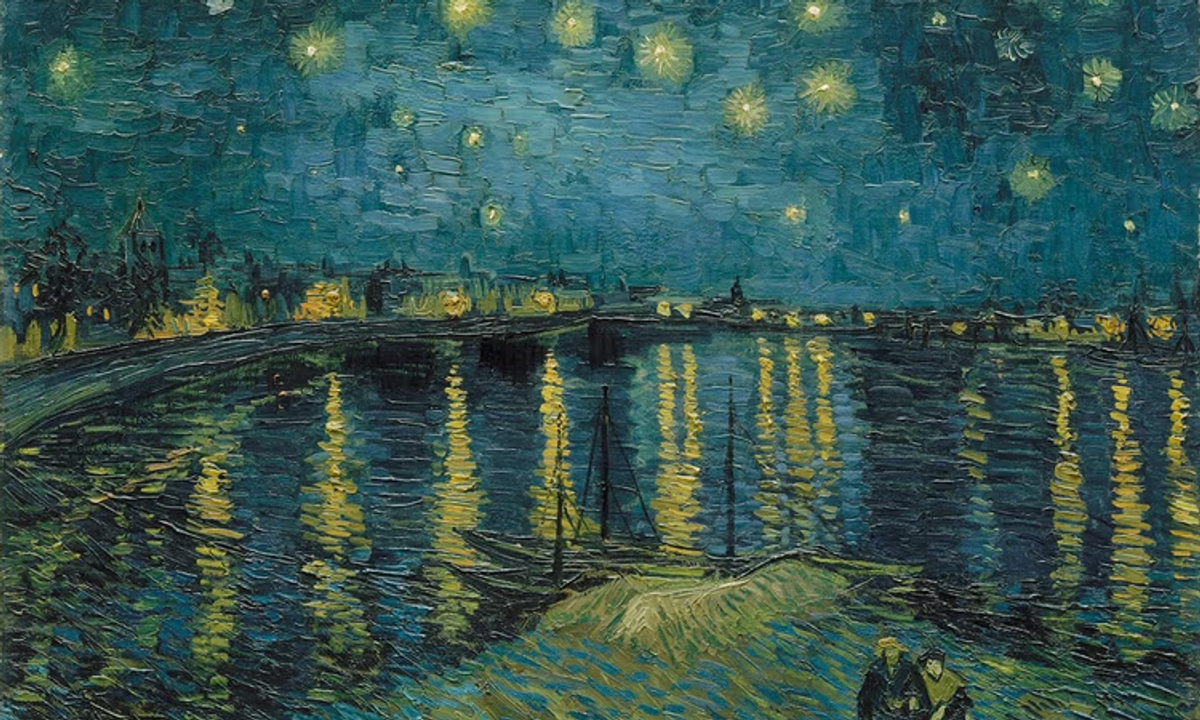
"To begin with the obvious, the stars of the depicted Plough (or Big Dipper) would never look quite so prominent, even in the relatively muted artificial light of 19th-century Arles. In the actual sky, the Plough points to the North Star, so these stars would have appeared behind Van Gogh when he was looking south at the view towards the centre of Arles."
"The street lamps along the Rhône embankment would have been far dimmer than those he depicted. They were gaslights, which then had a brightness of around 20 watts (a standard household bulb today is 60 watts). Van Gogh has positioned them roughly every 100m, so even the closest one in the painting would hardly have been noticeable. The most distant lamp in his picture would have been nearly a kilometre away, so completely invisible."
Van Gogh painted Starry Night over the Rhône from the small port at the northern end of Arles, a view he saw regularly from near his Yellow House. He repositioned the Plough (Big Dipper) into the painted sky, because in reality those stars would have been behind him when looking south. The street lamps along the embankment were gaslights of about 20 watts and were spaced roughly every 100 metres, so they would have been much dimmer than shown and their reflections in the rushing Rhône would have been minimal. Many compositional elements were heightened for artistic effect.
Read at The Art Newspaper - International art news and events
Unable to calculate read time
Collection
[
|
...
]